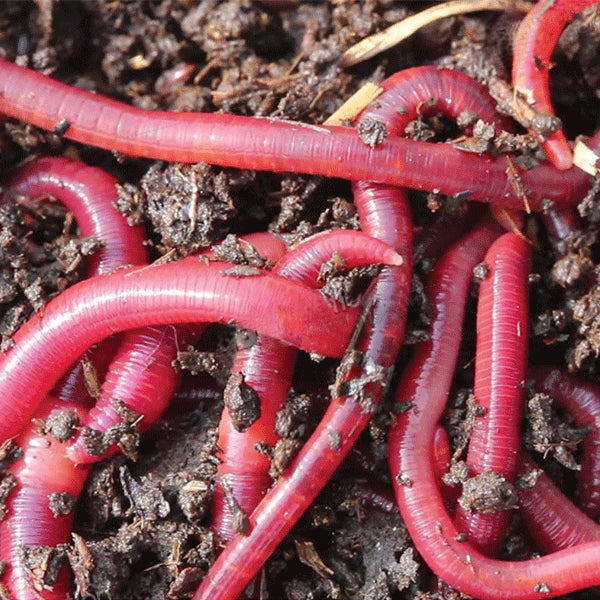Top-rated red worms: How to set up a worm farm
Top-rated red worms: How to set up a worm farm
Blog Article
Red Wigglers: The Secret to Eco-Friendly Composting
Red wigglers, clinically known as Eisenia fetida, play a pivotal duty in sustainable composting techniques, using a natural remedy to lose management. red wigglers. These worms not just take in organic materials but additionally transform them right into important vermicompost, enriching dirt health and wellness and advertising ecological balance.
What Are Red Wigglers?
Although many individuals recognize with earthworms, red wigglers (Eisenia fetida) are a particular varieties that play an essential duty in composting. Belonging to Europe, they have adjusted well to a variety of settings, especially in decomposing natural matter. Unlike usual garden worms, red wigglers thrive in rich, moist atmospheres, making them ideal for composting systems.
(red worms near me)These worms are defined by their reddish-brown coloration and extended bodies, commonly gauging between 3 to 4 inches in length. Red wigglers are epigeic worms, meaning they reside near the dirt surface area and eat decomposing natural material. Their high reproductive rate allows populaces to proliferate under ideal conditions, with the ability to increase in number every couple of months.
Red wigglers have an one-of-a-kind digestion system that enables them to break down organic waste efficiently. Their lasting nature makes red wigglers an important possession in environmentally friendly composting practices.
Advantages of Using Red Wigglers
Utilizing red wigglers in composting systems provides various benefits that enhance both the effectiveness of waste decomposition and the high quality of the resulting compost. These earthworms, medically called Eisenia fetida, are renowned for their extraordinary ability to eat organic waste, transforming it right into nutrient-rich vermicompost at an impressive price. Their rapid food digestion procedure accelerates the failure of kitchen area scraps and backyard waste, considerably lowering the time needed for composting.
Along with their effectiveness, red wigglers add to enhanced soil framework and fertility. The vermicast generated by red wigglers is rich in crucial nutrients, useful microbes, and humic acids, all of which improve dirt health and advertise plant development. This nutrient-dense garden compost assists keep dampness and improves aeration in the dirt, fostering a prospering ecological community for plants.
Moreover, making use of red wigglers for composting decreases garbage dump waste, adding to a more sustainable waste monitoring system. By drawing away organic materials from garbage dumps, composting with red wigglers decreases greenhouse gas exhausts, making it an environmentally friendly option for eco conscious individuals and neighborhoods. Generally, red wigglers give an effective and sustainable service for composting.
Establishing Your Worm Bin
Developing a worm container is a straightforward process that requires careful consideration of materials and conditions to make certain a growing environment for red wigglers. Begin by selecting an appropriate container, which can be a plastic bin or wooden box, with a capacity of a minimum of 10 gallons for effective composting. Guarantee the bin has sufficient ventilation by drilling small holes in the lid and sides to allow airflow.
Following, prepare the bed linen, which is vital for preserving dampness and giving an environment for the worms. Ideal products include shredded newspaper, cardboard, coconut coir, or peat moss. Go for a bedding depth of approximately 4-6 inches, guaranteeing it is wet yet not excessively wet.
It is very important to maintain the right temperature level for your worm container, ideally between 55 ° F and 77 ° F(13 ° C and 25 ° C) Position the container in a shaded location to stop overheating. Additionally, maintain the bin away from straight sunshine and extreme weather to safeguard the worms.
Feeding Your Red Wigglers
Feeding your red wigglers is an important element of effective worm composting, as it straight impacts their health and the efficiency of your composting system. Red wigglers grow on a healthy diet plan consisting primarily of natural waste materials. Ideal food choices consist of vegetables and fruit scraps, coffee grounds, crushed eggshells, and shredded paper. Prevent feeding them meat, milk, and oily foods, as these can draw in pests and develop odors.
(eisenia fetida for sale)To make sure optimum feeding, it is important to introduce food progressively. Start with percentages to allow the worms to consume the product totally prior to including extra. This strategy protects against overfeeding, which can lead to anaerobic problems and adversely influence worm wellness. Screen the food decay process and change the quantity based upon just how promptly the worms are refining the waste.

Keeping Your Worm Compost System
A properly maintained worm compost system is crucial for making best use of the efficiency and durability of your composting initiatives. Regular tracking of moisture levels is essential, as red wigglers flourish in a wet environment, ideally around 70% moisture. If the bedding ends up being also dry, lightly haze it with water; conversely, if it ends up being excessively wet, add completely dry bed linens such as shredded newspaper or cardboard to take in excess wetness.
Temperature level control is likewise crucial. Red wigglers favor temperature levels in between 55 ° F and 77 ° F(13 ° C to 25 ° C) If temperatures surpass 85 ° F(29 ° C), the worms might come to be stressed or die. Ensure your garden compost system is maintained in a shaded, ventilated location to protect against overheating.
Additionally, check for any unpleasant odors, which might show an inequality in the system. Regularly aerating the compost by gently turning it will assist preserve appropriate airflow and stop anaerobic problems. Keep track of the worm populace and their activity; a flourishing population shows a healthy environment. By following these upkeep techniques, you can make certain a productive and lasting worm composting system that efficiently reuses natural waste.

Verdict
In verdict, red wigglers play an important duty in eco-friendly composting by efficiently transforming organic waste right into important vermicompost. Welcoming the use of red wigglers stands for a practical method to boosting ecological sustainability and fostering much healthier ecosystems.
Report this page